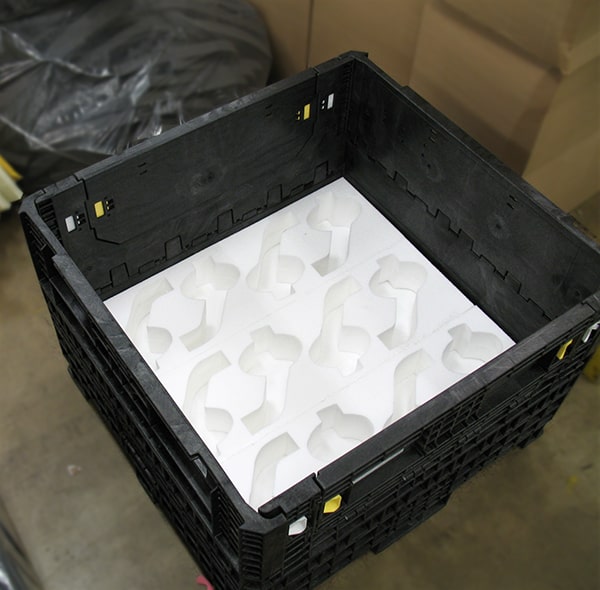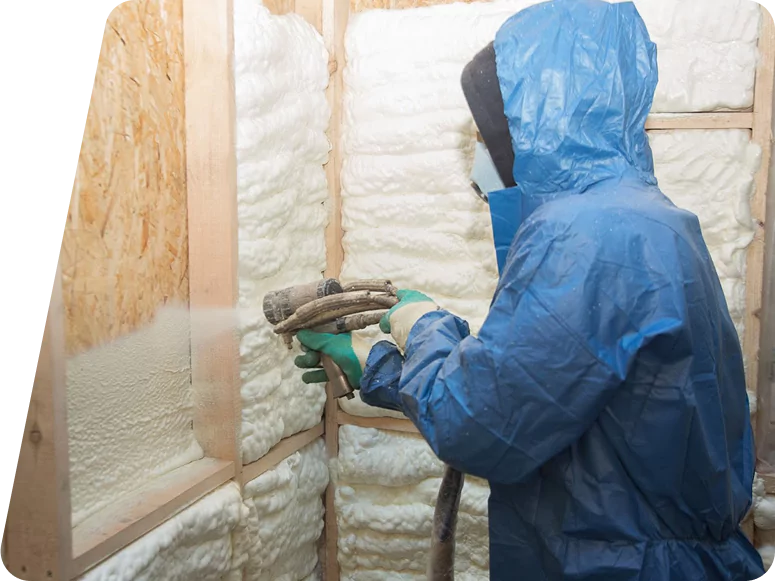Cargo stability may not draw the same attention as new shipping technology or advanced logistics software, yet it remains one of the most important parts of transport. Every load, whether on a truck, ship, or rail car, depends on dunnage—the racks, blocks, and separators that keep goods steady. If this foundation fails, even the strongest packaging cannot stop damage. What has changed in recent years is the way industries approach the protection of dunnage itself. Instead of accepting constant replacement, operators now rely on coatings and spray foam systems that extend durability and improve performance.
Spray foam stands out in this field because of its ability to cover irregular shapes, bond directly to surfaces, and form a protective layer that absorbs impact. While often associated with insulation, spray foam also contributes to the longevity of equipment that secures cargo. By combining cushioning qualities with surface protection, it reduces wear on dunnage and helps maintain the integrity of both the supports and the goods they hold.
The strain placed on dunnage
The role of dunnage is simple in concept but demanding in practice. Forklifts push against it during loading, chains press across it during tie-down, and pallets grind against it during transit. Over time, untreated steel rusts, wood splits from moisture, and composites degrade under constant stress. Each failure undermines cargo stability and increases the risk of damage or injury. In high-volume shipping environments, this cycle repeats daily, magnifying both cost and risk.
Applying protective systems to dunnage interrupts this cycle. A layer that shields the base material from abrasion, weather, and chemicals allows the equipment to hold up longer. Spray foam offers an added advantage by creating not just a barrier but a cushioned surface that absorbs vibration and reduces sliding. This dual function distinguishes it from traditional paints or sealants that focus only on preventing corrosion.
Spray foam as a surface solution
When applied to dunnage, spray foam expands to fill every curve and edge, covering areas that would otherwise remain exposed. It bonds tightly to substrates, whether steel, wood, or composite, and forms a uniform layer that resists peeling. Once cured, the foam retains enough flexibility to compress slightly under impact, dispersing force rather than concentrating it on the surface.
The cushioning effect has practical value in shipping. Goods remain more stable when they sit against a slightly forgiving surface rather than bare metal or wood. Sliding decreases, impact damage reduces, and both the cargo and the dunnage last longer. This benefit is especially clear in industries moving sensitive or high-value items, where minor impacts can result in major losses.
Spray foam coatings also work in tandem with more specialized systems. Companies developing advanced dunnage coatings integrate foam layers with polyurea or polyurethane membranes to create hybrid protection. The foam cushions and fills, while the harder top layer resists abrasion and weather. This combination provides resilience under both mechanical and environmental stress.
The place of polyurea in dunnage protection
While spray foam offers cushioning, polyurea systems bring long-term durability. Spray-applied polyurea cures instantly into seamless membranes that flex with the substrate and resist water, ultraviolet exposure, and chemicals. When combined with foam, the result is a multi-layer system that delivers both shock absorption and surface strength.
Insights into polyurea dunnage coatings show how this material has already proven itself in demanding industrial environments. It bonds without seams, covers complex geometries, and endures stress where other coatings fail. Spray foam enhances this approach by filling voids and creating a foundation for polyurea to perform more effectively.
Broader implications for cargo safety
Protecting dunnage protects more than the equipment. Stable loads reduce the chance of accidents during handling and transit. They prevent sudden shifts that can damage cargo or put workers at risk. Articles such as cargo protective coatings highlight the connection between surface protection and overall safety. By reinforcing dunnage, coatings and foam directly support safer supply chains.
For logistics managers, this preventive approach offers financial benefits as well. Longer-lasting dunnage reduces replacement costs, while fewer damaged shipments mean lower claims and higher customer trust. The connection between preventive maintenance and operational efficiency is straightforward, and spray foam fits naturally within this framework.
Moving toward comprehensive cargo protection
As transport networks grow more complex, the reliability of every component matters. Dunnage, though often overlooked, forms the literal foundation of cargo stability. Resources such as cargo protection underline how coatings, foam, and other surface systems work together to strengthen this foundation. The focus is shifting from patching after failures to designing systems that prevent failure in the first place.
This philosophy extends to new developments in material science. Hybrid solutions that combine foam with polyurea or polyurethane offer multiple layers of defense. They cushion impacts, resist abrasion, and block environmental damage. By investing in these approaches, companies future-proof their operations against the rising demands of global trade.
For a more technical perspective, resources discussing poly coatings for dunnage protection offer case studies and practical examples of how coatings and foam enhance reliability across various industries.
Conclusion
Spray foam has proven itself as more than an insulator. In the context of dunnage, it serves as both a protective barrier and a cushioning layer, reducing wear and enhancing cargo stability. When paired with polyurea and other advanced coatings, it becomes part of a comprehensive system that preserves dunnage under constant stress.
The logic is simple: protect the equipment that protects the cargo, and the entire system becomes safer, more reliable, and more efficient. Spray foam, once overlooked in this field, now plays a central role in ensuring that dunnage continues to perform its essential work day after day. For industries that depend on stable cargo, this quiet shift in surface technology makes all the difference.





